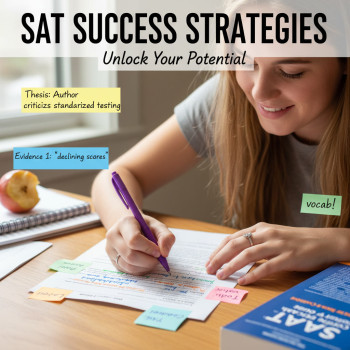Welcome: Why this FAQ exists (and how to use it)
If you and your student are staring at college applications and seeing “test-optional” next to a school’s name, you’re not alone in wondering, “Do we submit SAT scores or not?” The shift toward test-optional admissions has created a liberating — but sometimes confusing — landscape. This FAQ is built to be practical, conversational, and parent-friendly: answers you can use immediately, checklists you can act on, and sensible ways to decide what’s right for your family.

Quick overview: What “test-optional” really means
Test-optional means a college permits applicants to decide whether to include standardized test scores (like the SAT) as part of their application. It doesn’t mean scores are meaningless — rather, they become one of several optional data points the admissions team may consider.
Important nuance: “Test-optional” policies vary widely. Some schools:
- Truly do not consider scores if not submitted.
- Will consider scores if submitted and may use them for admission or scholarship decisions.
- Are test-blind or test-free — a smaller number — meaning they do not consider scores even if submitted.
Because policies differ, the first rule of applying to a test-optional college is: check that college’s exact policy on its admissions page. But beyond that, here are common, defensible guidelines that apply to most families.
FAQ section
1) Should my student take the SAT if colleges are test-optional?
Short answer: Often yes — but it depends.
Why take it anyway?
- Choice and flexibility: Having a score gives you options. If scores will strengthen an application or open scholarship opportunities, you can submit them. If they don’t, you can choose not to.
- Scholarships and placement: Many institutions still use SAT scores to award merit scholarships and place students into math, writing, or honors courses.
- Recruitment and visibility: By participating in the Student Search or similar services at time of testing, you’ll hear from colleges that match your profile — helpful for discovering fits you hadn’t considered.
When might you skip it?
- If the student is extremely test-anxious and practice indicates little improvement despite quality preparation; mental health and consistent school performance can be stronger signals than a forced low score.
- If the colleges on your list explicitly say they won’t look at scores or are test-blind for your admission year.
2) How do we decide whether to submit SAT scores to a test-optional school?
Ask three questions:
- Would the score enhance the narrative of the application? (E.g., GPA is lower than your potential; a strong SAT can demonstrate aptitude.)
- Does the school use scores for scholarships or placement?
- Does the score align with the school’s published middle 50% range?
Practical threshold: if a student’s SAT score is at or above a college’s middle 50% range (or close enough within a few points), submitting is usually beneficial. If the score is below and other application parts are strong, consider withholding it.
3) When should we send scores?
Timing matters. Consider these scenarios:
- Apply-early (EA/ED): If you test before early deadlines and score is competitive, include it with early apps to strengthen an early case.
- Wait-and-decide: If your student plans multiple test dates, wait until after a planned retake and only send the best result (or use Score Choice if it benefits you).
- Scholarships: Many scholarship deadlines align with application deadlines. If a scholarship requires scores, be sure to send them by that scholarship’s deadline — often the same as the application deadline.
4) Does sending SAT scores hurt my child if they’re not great?
Not necessarily. Admissions teams look holistically at many elements. But if a score would create an obvious mismatch with transcript performance (for example, a high GPA and a very low SAT), it can raise questions. If a score is below the college’s typical range and doesn’t help for scholarships or placement, withholding is usually the safer route.
5) Can test-optional schools still give scholarships based on SATs?
Yes. A good number of test-optional colleges continue to use SAT scores for merit scholarships. That’s a subtle point — you can opt not to include a score with your application, but a school might still ask for scores when considering scholarships. If scholarships are a priority, take the SAT and clarify whether scores must be submitted to scholarship committees.
6) What if my student’s GPA is strong but their SAT isn’t? Which should we emphasize?
Generally, a strong GPA and rigorous course selection are among the most reliable indicators of college success. If GPA is strong, lean into letters of recommendation, course rigor, extracurricular depth, and personal statements. Submit SAT only if it complements this story (e.g., solid score for intended major or scholarship eligibility). If in doubt, consult the admissions office — many staff can advise what they prefer to see.
7) How do colleges actually use SAT scores if they are optional?
Common uses include:
- Admissions evaluation (when submitted)
- Scholarship consideration
- Course placement or advising
- Identifying students for honors programs or special outreach
Remember: the College Board does not tell colleges how to use scores. Each college sets its own rules, which is why checking each institution’s published policy is essential.
Practical checklist: Applying to test-optional colleges
Follow these actionable steps to stay organized and intentional.
- Make a clear school-by-school table of test policies (required, optional, blind) and scholarship rules.
- Plan SAT test dates and at least one practice path: official practice, timed sections, and one full-length mock under conditions.
- Decide a target SAT score range for each college (compare to the school’s middle 50%).
- Collect supporting materials that show academic strength: rigorous courses, grade trajectory, strong teacher recommendations, and an honors or AP summary.
- Draft a plan for sending scores — early if strategic, or later if waiting for a retake.
- Communicate with admissions or admissions counselors if you’re unsure about how they treat scores.
At-a-glance comparison table
Use this sample table to track decisions for each school. Replace sample data with your own college list.
| College | Policy Today | Score for Scholarships? | Middle 50% SAT | Submit Score? | Notes/Action |
|---|---|---|---|---|---|
| State University | Test-optional | Yes | 1100–1300 | Yes (if ≥1200) | Retake in Oct if 1st attempt <1200 |
| Private College | Test-blind for 2025 applicants | No | N/A | No | Focus on essays and recs |
| Regional Liberal Arts | Test-optional; will consider for merit | Yes | 1150–1350 | Yes (if ≥1150) | Apply EA and include score if ≥1150 |
Preparing effectively for the SAT (so your decision is informed)
Preparation is about smart practice, not just hours. Here are high-impact strategies:
- Targeted practice: Identify weakest areas (timed reading passages, algebra topics) and focus short, frequent sessions on those topics.
- Official materials: Use practice tests from the test provider for realistic timing and question style.
- Simulate test conditions: At least two full-length timed practice tests under real test rules to build endurance and pacing.
- Score analysis: After each practice test, review every mistake. Ask: was it content, careless error, or time pressure?
- Plan retakes strategically: allow enough time between test dates for focused improvement.
Tip for busy juniors and seniors: short, consistent practice beats sporadic marathon sessions. Thirty to forty minutes a day, five days a week, can be transformative when targeted.
How Sparkl’s personalized tutoring can help (if you choose to use it)
For families who want guided preparation, Sparkl offers 1-on-1 guidance, tailored study plans, and expert tutors who identify weaknesses quickly and recommend focused practice. Sparkl’s approach pairs human tutors with diagnostic insights to accelerate improvement — particularly helpful if you’re aiming to submit scores for scholarships or selective test-optional programs.
How to write about test-optional status on applications and essays
Most applications don’t require you to explain whether you submitted test scores. If you choose to mention testing in an optional addendum or counselor letter, keep it concise and contextual:
- Explain clear, objective reasons (illness, family circumstances, lack of testing access) — avoid sounding like you’re making excuses.
- If not submitting because score doesn’t reflect ability, show alternative evidence: upward grade trends, AP scores, research projects, or relevant achievements.
- Use a counselor’s letter to confirm any unusual circumstances if they impacted test performance or access to test centers.
Special cases and tricky scenarios
If your student has accommodations or testing disruptions
Students who test with official accommodations should ensure their College Board testing profile reflects this, and that colleges know how to receive and interpret accommodated scores. For pandemic, weather, or other disruptions, admissions offices are typically understanding — provide documentation via a counselor if needed.
If your student is applying for STEM or language-heavy majors
Some programs place more weight on quantitative or subject-specific evidence. For STEM, a strong math SAT score (or subject test equivalents, AP calculus scores, and relevant coursework) can matter for placement and honors. For language programs, strong reading/writing evidence can be persuasive even if a general SAT score is optional.
Communication and transparency: when to talk to admissions
When in doubt, reach out. A brief, polite email to an admissions counselor with a question like “Does your office recommend that applicants with X profile submit SAT scores for scholarship consideration?” can give clarity. Admissions staff are used to these questions and often appreciate applicants who ask specifics.
Checklist before hitting submit
- Confirm each college’s test policy and scholarship rules, recorded in your decision table.
- Confirm test send deadlines if applying for scholarships or early decisions.
- Finalize whether to submit scores for each application; document the reason for that choice so essays and counselor notes align.
- Double-check that teacher recommendations highlight non-test evidence (work ethic, classroom contributions, projects) when not submitting scores.
- Review the application with an adult — parent, counselor, or tutor — to ensure your story is coherent and complete.

Real-world examples and scenarios
Example A — The Rising Senior with High GPA, Low Practice SAT:
Maria has a 3.9 GPA in a challenging course load, strong teacher recommendations, and leadership in the robotics club. Her initial SAT was below the middle 50% for her target colleges. Her strategy: invest in targeted math practice and one retake; if her score reaches the school’s range, submit it for scholarship review; otherwise, skip submission and highlight AP scores and project work. This keeps options open without forcing a lower-performing data point into the file.
Example B — The Student Seeking Merit Aid:
Jamal’s GPA is solid but not stellar for a competitive merit scholarship. He treats the SAT as an opportunity: he prepares intensively, works with a tutor for targeted weak spots, and increases his score by 130 points. That improvement unlocked application-based scholarships he wouldn’t otherwise have had a realistic shot at.
Final thoughts: make your plan, and stay flexible
Test-optional doesn’t mean “don’t prepare” — it means “choose intelligently.” The best approach is to gather information early, practice smartly, decide school-by-school, and use scores only when they strengthen the student’s story.
Remember the human side of admissions: committees are trying to understand the student’s potential and fit. Whether you submit an SAT score or not, present a consistent and honest narrative: strong academics, meaningful activities, thoughtful essays, and clear recommendations.
Resources and next steps
Before you finalize: build a short spreadsheet with each college, their test policy, scholarship use of scores, and application deadlines. Schedule at least two full practice tests under conditions, and book testing/retake dates with time for real improvement. If you want guided, individualized help, consider engaging a tutor for a short, focused plan — even a few weeks of 1-on-1 guidance from an expert (and tools that combine diagnostics with human feedback) can clarify whether to submit scores and may raise the score enough to change the decision.
A final calming note for parents and students
The move toward test-optional admissions gives families more control — but with that control comes decisions. Prioritize mental well-being, realistic goals, and a balanced college list. College admissions are an important chapter, not the whole story. With a thoughtful plan, well-chosen test strategy, and strong supporting materials, your family will make decisions that reflect your student’s strengths and aspirations.
Good luck — and remember: take the next step deliberately, celebrate each milestone, and keep perspective. You’re building toward a successful college match, and every strategic choice gets you closer.

















No Comments
Leave a comment Cancel